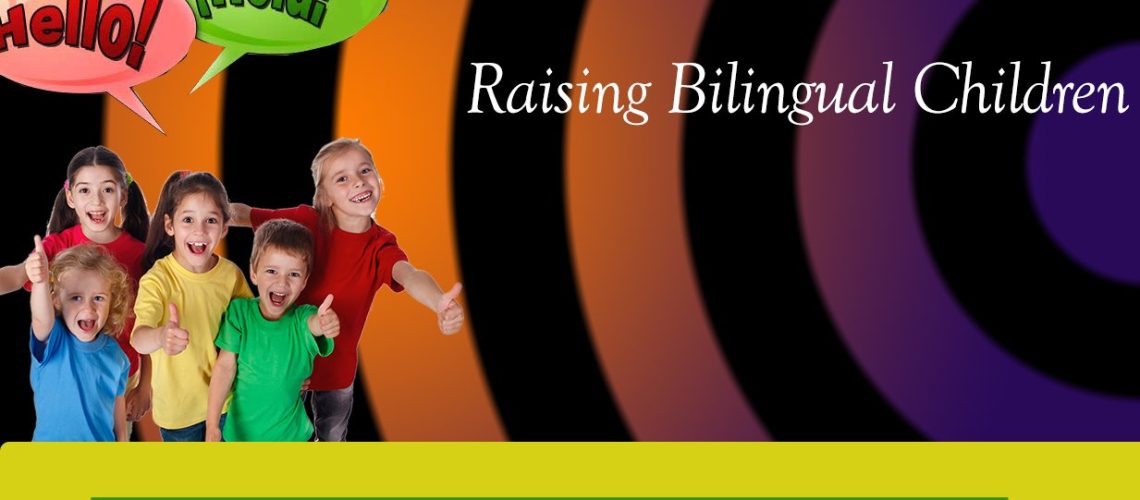The world we live in is getting somewhat smaller globally. As a result, culturally mixed families are increasingly common, as well as people starting a family abroad. This trend implies that many children are being raised as bilinguals or even tri-linguals sometimes!
It is estimated that there are as many bilingual children as monolingual ones (1) and this number is likely to grow. Sometimes raising bilingual children is a matter of necessity. The parents may not be fluent in the language of the country they live in, but quite often parents do want to expose their children to their mother tongue to get in touch with their native culture, their relatives, or to simply benefit from the advantages of being bilingual.
Research show that there are several advantages in being bilingual, which might include developing some good language related capacities, such as being able to learn new words easily and developing good listening and communication skills, but also other kind of abilities. For example, bilinguals are proven to be better at problem solving and to be more creative, or bilingualism diminish the effects of ageing on the brain. Not to mention the practical advantages bilinguals can gain, for example they are likely to have better job opportunities and higher incomes.
Despite bilingualism having several benefits, most of the parents might find raising bilingual children challenging, especially because of the myths that still surround it.
Let’s go through the most common ones:
- Bilingual children experience a delay in speech
In the past, bilingualism was held accountable for speech delays, which is scientifically proven to be false! Even though some bilingual children might start talking slightly later than monolingual ones, this ‘delay’ is temporary and it only happens sometimes. Furthermore, despite the fact that their vocabulary in each language could happen to be narrower, the total vocabulary of the child in both languages will be as wide as a monolingual’s one – if not wider (1).
- Learning two languages confuses children
This is the most common misconception, which is related to the fact that bilingual children tend to mix up languages. This mixing is no sign of confusion and again it is temporary. On top of that, the phenomenon called code switching or code mixing is typical of bilingualism. Indeed, also bilingual adults code mix when speaking with other bilinguals – just think about the Spanglish! Research prove that infants can already differentiate two very different language from few days after birth and they can do the same with similar languages – like Spanish and Italian – by the time they are six months old.
- Children learn quickly and they will become bilingual with no effort
Children do learn very quickly but this doesn’t mean it won’t require any effort. They won’t become bilingual just meeting some family speaking the second language over holiday periods. If you want your children to become bilingual, you must expose them to both languages constantly and consistently, especially if you want them to be equally proficient in both. However, this is not very likely to happen. Most bilinguals have a ‘dominant language’, which is generally the language of the society they live in. This language of greater proficiency might change with age, depending on education, employment, family and other factors.
This last point is directly linked to the next issue to deal with – What’s the best way to raise a bilingual child?
Let’s start with the age. It is commonly believed that to raise bilingual children, you must expose them to the second language during the early childhood, otherwise it will be too late. That is one more myth. Anyway, the sooner it happens, the better it is. The best time to learn a first language is from birth to six years. This is the window of time when the second language is most easily learned, but it is only after puberty that children start storing new languages in different parts of the brain, and therefore translate or go through their first language when using the second one.
The second issue is how to do that practically. You don’t have to teach the language to your children, but in order to get them to learn it, you need consistency. Just use it in everyday conversation and they will learn it. Then, if you want them to develop a greater proficiency, introducing books could be a good option, but never stop speaking it. Don’t worry that your children won’t learn the community language. They will be continuously exposed to it, so no matter what, it is sure they will master it.
There are many ways to make it fun for your child to learn the second language. One of the most effective means is through music. Your children will easily learn the lyrics and enrich their vocabulary in the second language almost effortlessly.
Another good idea is to join a playgroup with other bilingual children. If your children have peers who speak the same minority language, they can get in touch with the second language elsewhere than at home and it would become more relevant to them to learn it.
It is well known that playing helps children learn. Of course, it applies to language learning as well. Board games, toys, puppets are a funny way to make them listen to, speak and use the second language. And why don’t watch some cartoons?
Last but not least, read them some stories. Books would not only increase your children’s vocabulary and make them learn new grammar structures, but also open up a new world for them, enhance their concentration, fuel their imagination and help them see books as something enjoyable, so that they will probably keep on reading on their own when older.
The main idea is to make your children practice the language in ways that make it interesting and relevant to them. Just find the options that suit you best and remember that being bilingual is a great opportunity for your child to gain linguistic and cultural advantages, as well as social and cognitive benefits. Don’t make your children miss it!
References:
(1) Paradis, J., Genesee, F., & Crago, M. (2011). Dual Language Development and Disorders: A handbook on bilingualism & second language learning. Baltimore, MD: Paul H. Brookes Publishing.
Francesca Greco








